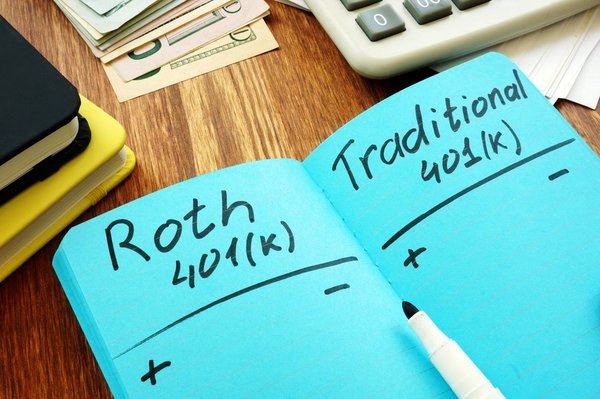You invest in your 401(k) to make your money grow over time, but it doesn't always work out that way. When you notice your savings losing value, your first instinct may be to sell everything, but this usually isn't your best option. Here are four things you can try to get your savings back on track.
1. Make sure your investments are well diversified
The first thing you should do if your 401(k) or IRA is losing money is to check that you are well diversified. You want your money spread among many stocks, bonds, and other investment products. If you have all your savings tied up in a single stock and it plummets, that's a more serious issue than when you're invested in 100 things and one of them dips in value.
Few 401(k)s allow you to purchase individual stocks anyway. You'll be choosing mutual funds and exchange-traded funds (ETFs). These are groups of investment products you purchase as a package, which is a convenient and affordable way to diversify your portfolio.
You want a mix of stocks and bonds, although your preferred ratio will depend on your goals and risk tolerance. You also need to think about the assets and sectors you invest in. You don't want to invest too heavily in one industry, like technology. If it has a financial crisis, your portfolio could still lose value even if you're invested in many different assets within that industry.
While some 401(k)s may offer sector-specific funds, you're more likely to have a choice between U.S. and international stocks or large-cap and mid- or small-cap funds.
If you suspect a lack of diversification is partly to blame for your 401(k) or IRA taking a hit, ask a financial advisor for tailored recommendations.
2. Ride it out
If you're young and your investments are well diversified, the best thing to do when you see your 401(k) or IRA losing value may be nothing at all. All investments have ups and downs, and it's never wise to judge long-term growth potential by recent performance. Even if your investments take a short-term hit, their value could rise again long before you need the funds.
Unless you think the investment is no longer appropriate for your risk tolerance or you question its long-term stability -- for example, if you own stock in a company that keeps losing market share to its competitors -- leave your portfolio alone. Continue making contributions and don't get too hung up on short-term dips. They could actually benefit you in the long run if you purchase shares when prices are low and they later rise.
3. Move your money to more stable investments
If you're nearing retirement age and you see your 401(k) declining, you may not be able to wait for your portfolio to recover before you need to begin using that money. In this case, move more of your money to more stable investments like bonds. When you buy a corporation's or a government's bonds, you're lending money to that entity, which it promises to pay back with interest over time. The only way you wouldn't be repaid would be if the entity defaults on the loan, which doesn't happen often -- unless you're talking about junk bonds.
Another option for the conservative investor is low-volatility ETFs, also known as minimum variance ETFs. These are known for experiencing fewer ups and downs than most ETFs.
These investment products may not provide as large a return as individual stocks, but they also tend to be more stable, so there's less risk of them losing a lot of their value.
4. It's sometimes possible to get a tax deduction, but that may not be worth it
The government allows you to claim a tax deduction if your 401(k) or other retirement plan has lost value, but there are rules you must follow. First, you must have basis. In this case, basis refers to nondeductible contributions you've made. Deductible contributions -- those that reduce your taxable income for the year -- do not count. You haven't paid any taxes on that money so far, so the government is not going to give you a tax deduction on the amount you lost.
You also must close all retirement accounts of the same type in order to calculate the loss. So if you're trying to claim a loss on your 401(k), you must close all of your 401(k)s. Then you total your nondeductible contributions and the current value of the accounts, and you can write off the difference if the current value of the accounts is lower.
But this is inconvenient for two reasons. First, if you withdraw money from your 401(k) before age 59 1/2, you pay a 10% early withdrawal penalty. This may negate some of the benefit you get from writing off the loss. Second, if you take the money out of your 401(k), you're giving up the tax advantages it offers and your money will no longer grow as quickly unless you invest it in something else.
For these reasons, it's not wise to claim a tax deduction on a 401(k) loss unless you're older than 59 1/2 and plan to use the money to cover your retirement expenses in the near future anyway. Otherwise, try one of the suggestions above.
You can't control the stock market, but by understanding how it works and avoiding impulsive decision-making, you can handle temporary dips in the value of your retirement assets.














































